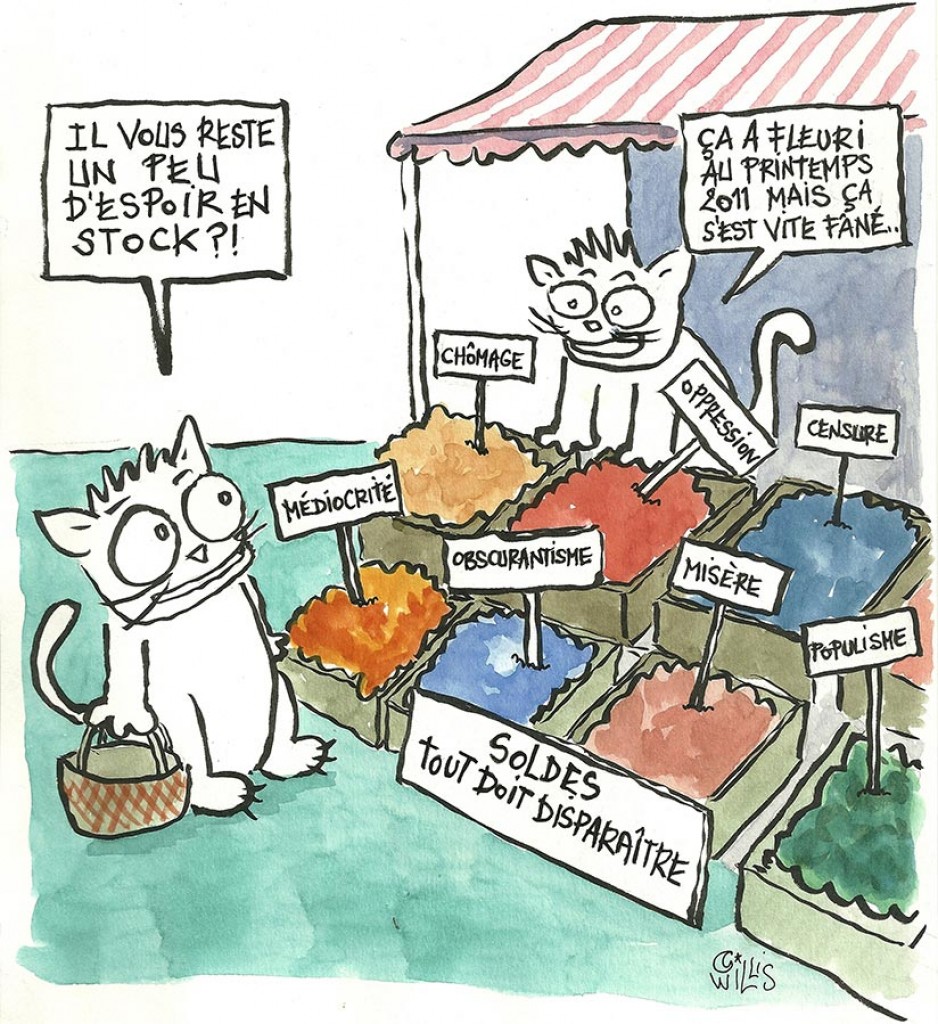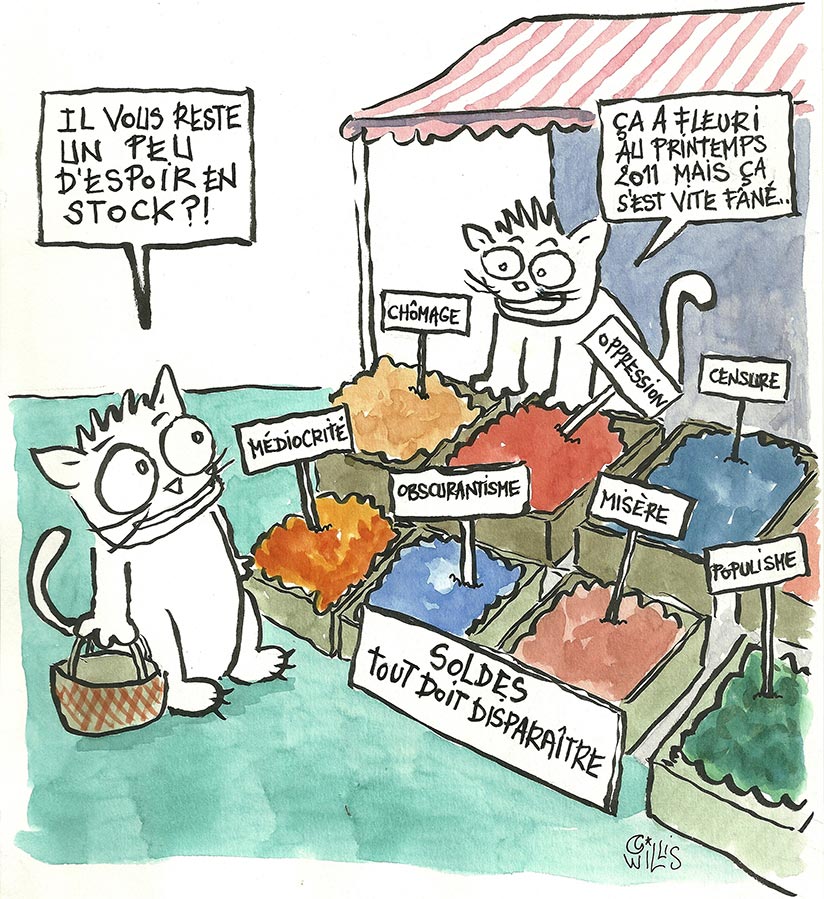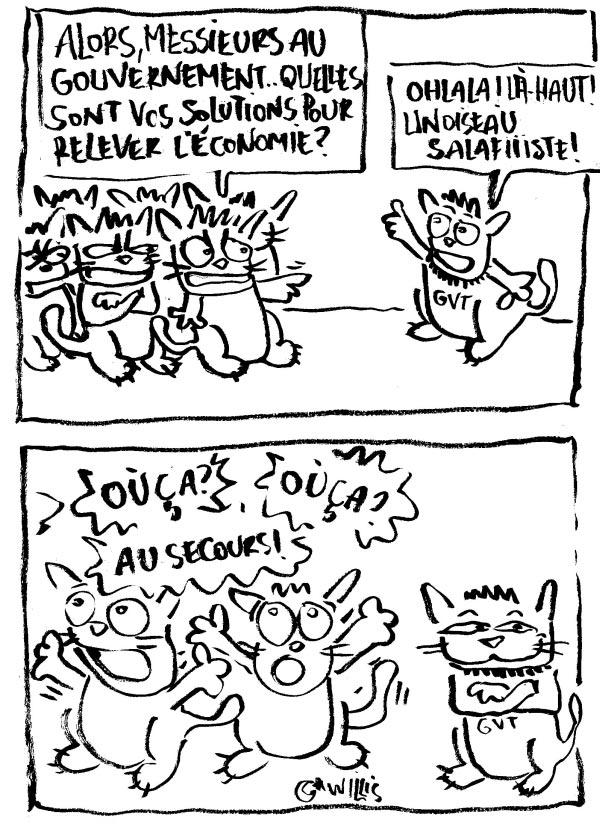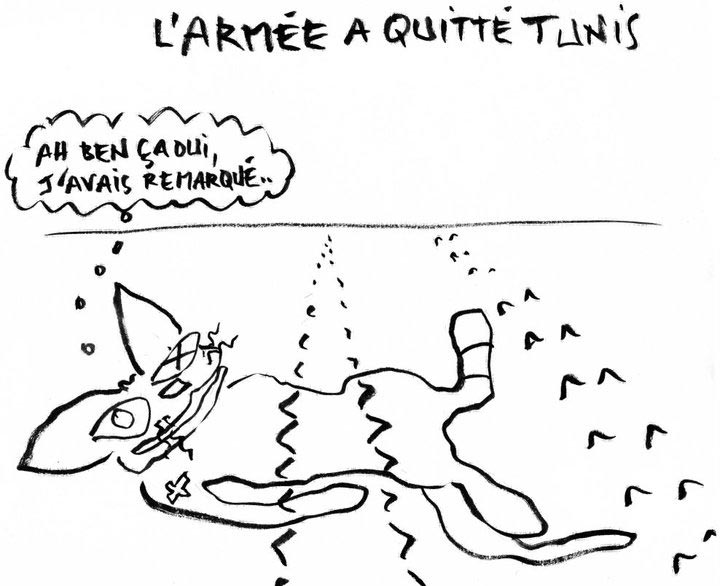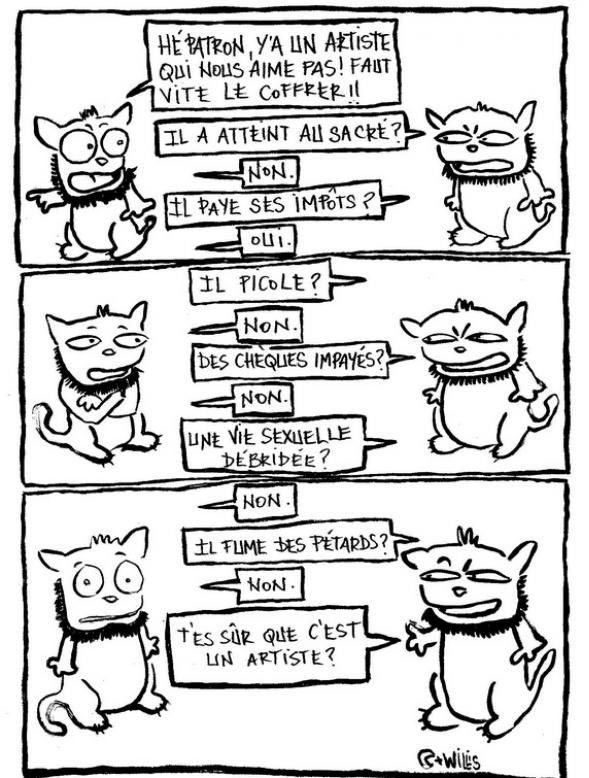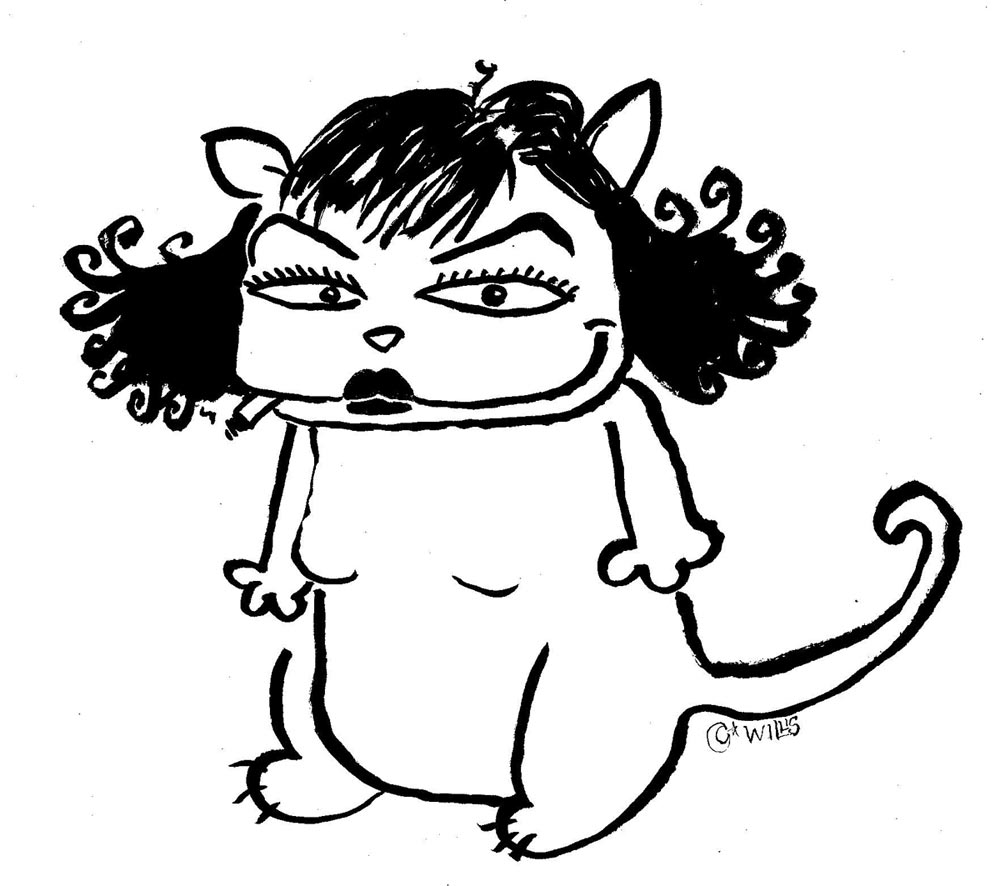'Willis from Tunis'. The salesman sells various products in a clearance sale, because they need to disappear, including "Unemployment", "Oppression", "Censorship", "Mediocrity", "Obscurantism", "Misery" and "Populism". Translation: "Do you still have a little left?!" - "This has been flourishing since the Spring of 2011, but quickly faded away."
Nadia Khiari is a Tunisian cartoonist, best known for her signature series 'Willis from Tunis' (2011). She created the character during the Arab Spring, when people rose against President Zine el-Abidine Ben Ali. Khiari featured Willis the cat in comics and one-panel cartoons, but also in street graffiti. The feline became an unexpected voice of rebellion. When in 2011, President Ben Ali was forced to resign, causing a political earthquake, Khiari played a significant part in. Khiari remains one of her country's most vocal satirists and political commentators. Another North African cartoonist who rose to prominence during the 2011 Arab Spring is the Egyptian artist Ganzeer.
Early life
Nadia Khiari was born in 1973 in Tunis, Tunisia. She studied plastic arts at the Academy of Aix-en-Provence and became an art teacher at the Faculty of Fine Arts in Tunis. Among her graphic influences are Aubrey Beardsley, Gustave-Henri Jossot and Siné. Her favorite writers are Fyodor Dostoyevsky, Hermann Hesse, Yukio Mishima, Philip K. Dick and Charles Bukowski. She had her own gallery, Arthyshow, and a short-lived online magazine YakaYaka.org, which helped her and other artists to publish work that otherwise wouldn't be allowed in print.
'Willis from Tunis'. Translation: "Well, government officials... what are your solutions to revive the economy?" - "Oh, look, up there, a salafist bird!" - "Where? Where? Help!".
Willis from Tunis
In 2011, various Middle Eastern countries rose against the dictatorships that held them in a stronghold for so long. In Egypt, Libya and Yemen entire governments toppled. In Tunisia, President Zine el-Abidine Ben Ali felt the tide was turning and tried to suss the angry population by paraphrasing President Charles De Gaulle during the 1954-1962 Algerian crisis: "Je vous ai compris" ("I've understood you"). He promised more freedom of speech, even though curfew was still in effect. This inspired Khiari to draw a cartoon featuring a group of mice threatening a cat who tries to shoo them away by uttering the same lame excuse. She named the feline "Willis from Tunis". On the same day Khiari made his first cartoon, 13 January 2011, she also launched a Facebook page for the character. To her amazement, she gained thousands of followers within a matter of days. Even more amazing was that Ben Ali fled the country one day later.
'Willis from Tunis'. Translation: "The army has left Tunis. Ah, well, I have observed that."
Khiari owes her artistic breakthrough to Willis the Cat. Before 2011, she drew in a very detailed style, but hadn't quite found her own voice yet. When she made her first Willis cartoon, she took on a simpler, more spontaneous style. Within the political turmoil of Ben Ali's departure, the demand for more Willis cartoons grew. To keep up with all latest developments, Khiari held on to this simpler drawing style. She shared her cartoons online and spray-painted them on walls of local buildings in Tunis. This gave her an underground appeal and helped Willis grow into a symbol of Tunisian rebellion. Her notoriety spread to the point that one of her favorite cartoonists, Siné, gave her the opportunity to publish in his own independent magazine Siné Mensuel. It also happened to be the first time that her work appeared in print. Khiari traveled to France for the occasion. Since then her cartoons have also appeared in Courrier International, Zelium, Noir et Blanc and the Tunisian journal 360.tn.
'Willis from Tunis'. The government official wants to put away an artist who "doesn't like us", but his colleague asks him several questions, whether the artist "reached a holy stage", "pays his taxes", "drinks", "has unpaid checks", "a depraved sex life" or "smokes firecrackers"? When his friend answers "no" to most of his questions, he asks him: "Are you sure he's an artist?".
Khiari updates 'Willis from Tunis' every day. She not only addresses political issues in her country, but also rights of women and homosexual people. Most of her cartoons are in black-and-white, but she often uses red and black in her work, to create an anarchist undertone. Apart from Willis, all other characters in her comics are cats. This allows her to voice her opinions without directly caricaturing politicians. So far, three titles of 'Willis the Cat' compilation books are available: 'Chroniques de la Révolution' (2011), 'Willis from Tunis 2' (2012), 'Manuel du Parfait Dictateur' (2015) and 'Willis Tunis, 10 Ans et Toujours Vivant!' (Elyzad, 2020). 'Manuel du Parfait Dicateur' is a thinly disguised critique of former president Ben Ali. Khiari drew the book to coincide with the 2015 presidential elections, to discourage some fellow Tunisians nostalgic for the dictator they ousted from power only a few years earlier.
Recognition
In 2012, Nadia Khiari received the Prix Honoré Daumier as part of the Cartooning for Peace project. The university of Liége, Belgium, honored her with the title doctor honoris causa for her work encouraging the freedom of expression. In 2014, she was one of several cartoonists to be interviewed in the documentary 'Caricaturists, fantassins de la démocratie' (2014) by Stéphanie Valloatto, alongside Plantu, Slim, Angel Boligan, Baha Boukhari, Jeff Danziger, Michel Kichka, Pi San, Rayma Suprani, Damien Glez, Mikhaïl Zlatkovski and Zoho. The same year, she won the award for best political satire in Forte dei Marmi, Italy. In 2016, she received the prix "Couilles au Cul" from the editorial team behind the magazine Fluide Glacial.


